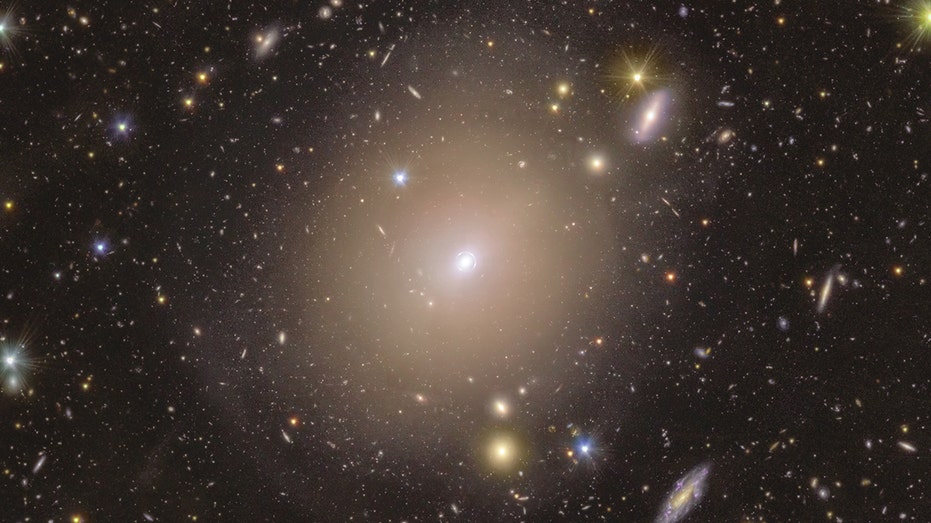
ESA’s Euclid Space Telescope Unveils Stunning Einstein Ring
The European Space Agency (ESA) announced on Monday that its groundbreaking Euclid space telescope has uncovered a remarkable astronomical phenomenon known as an Einstein ring. This discovery showcases a brilliant halo of light surrounding a distant galaxy, capturing the attention of astronomers and space enthusiasts alike.
A Cosmic Wonder: What is an Einstein Ring?
An Einstein ring is a rare optical illusion that occurs when the light from a distant galaxy is distorted by the gravitational pull of a foreground galaxy. This phenomenon was first theorized by physicist Albert Einstein as part of his general theory of relativity, which predicts that massive objects can bend light, acting like a giant lens. In this case, the halo of light was photographed encircling a galaxy located approximately 590 million light-years away, a relatively close distance in the vastness of the cosmos. For context, one light-year equates to about 5.8 trillion miles.
Euclid’s Mission: A New Era of Exploration
Launched from Cape Canaveral, Florida, on July 1, 2023, the Euclid space telescope is embarking on a six-year mission dedicated to exploring the enigmatic dark universe. Before commencing its extensive survey, scientists conducted rigorous tests to ensure the telescope’s equipment was functioning properly. During these early assessments in September 2023, Euclid transmitted images back to Earth, which, although initially out of focus, revealed unexpected treasures.
Bruno Altieri, an archive scientist at ESA, discovered the bright glowing ring while analyzing the data. “Even from that first observation, I could see it, but after Euclid made more observations, we could see a perfect Einstein ring,” he noted. “For me, with a lifelong interest in gravitational lensing, that was amazing.”
The Significance of NGC 6506
The galaxy in question, known as NGC 6506, has been known to astronomers for over a century. However, the dazzling ring of light around its center had never been detected until now. Conor O’Riordan from the Max Planck Institute for Astrophysics emphasized the rarity and scientific importance of such strong lenses. “This one is particularly special because it’s so close to Earth and the alignment makes it very beautiful,” he remarked.
The Mechanism Behind Gravitational Lensing
Gravitational lensing occurs when a background galaxy’s light passes by a foreground galaxy, which serves as a natural magnifying glass. The gravitational forces at play cause the light rays to bend, creating the ring-like appearance when the galaxies and telescope are perfectly aligned. This captivating effect allows scientists to observe light from galaxies that would otherwise remain hidden from view.
A Testament to Euclid’s Power
Valeria Pettorino, ESA Euclid project scientist, expressed her fascination with the discovery. “It’s intriguing that this ring was observed within a well-known galaxy, first discovered in 1884. This demonstrates how powerful Euclid is, finding new things even in places we thought we knew well,” she said. The discovery of the Einstein ring not only highlights the telescope’s capabilities but also sets the stage for future explorations.
Looking Ahead: What’s Next for Euclid?
As the mission progresses, scientists anticipate that Euclid will shed light on the mysteries of gravity, dark energy, and dark matter. The telescope is set to map over a third of the sky, observing billions of galaxies as far as 10 billion light-years away. ESA estimates that Euclid could identify around 100,000 additional strong lenses, but finding one so remarkably close and visually stunning is indeed extraordinary.
“Euclid is going to revolutionize the field, with all this data we’ve never had before,” O’Riordan concluded, highlighting the transformative potential of this mission.
In summary, the discovery of the Einstein ring by ESA’s Euclid space telescope not only enriches our understanding of the universe but also exemplifies the telescope’s groundbreaking potential to uncover new cosmic phenomena.

